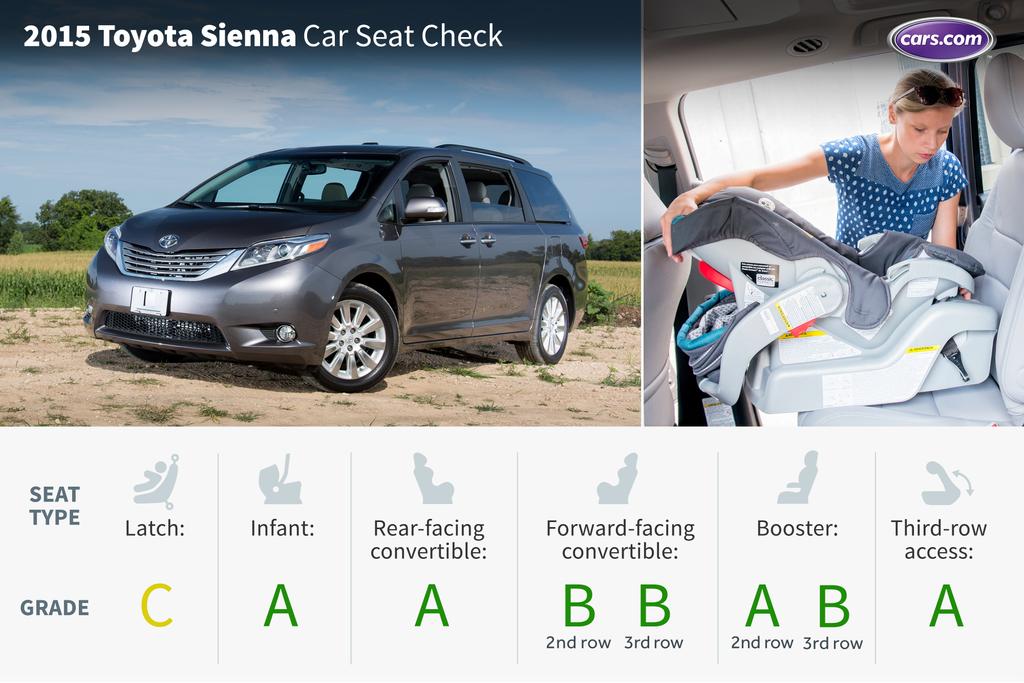
Sometimes little changes can add up to a big improvement. That's the case for the Toyota Sienna minivan, which underwent some minor revisions for the 2015 model year. We tested the 2015 Sienna earlier this year, but decided to revisit it when it came into the Cars.com offices recently. Improvements to the Sienna did not carry over to car-seat installation, however.
In this round of car-seat installation, we turned a critical eye to the Sienna's difficult-to-find tether anchors and downgraded some scores associated with this important piece of the Latch system. The top tether anchor holds a forward-facing car seat against a car's backseat, reducing the car seat's forward and side movement in a crash. Unfortunately, more than 50 percent of parents who install a forward-facing car seat don't use the car seat's tether strap, according to a recent study.
For this Car Seat Check, we had a top-line Sienna Limited Premium trim with leather seating and room for seven passengers. When equipped with a three-seat bench in the second row, the Sienna can seat up to eight.
How many car seats fit in the second row? Two
How many car seats fit in the third row? Two
What We Like
- There are four sets of lower Latch anchors in the Sienna's second and third rows. The third row's lower Latch anchors are easy to find and use.
- The Sienna's long-sliding captain's chairs allow for plenty of room when installing the rear-facing infant and convertible seats. There was no need to move the front passenger seat forward to fit either of these car seats in the second row.
- The infant seat's thin, hooklike connectors make it easier to reach the second row's lower Latch anchors.
- The forward-facing convertible also fit well in the second row's captain's chairs.
- In the second row, the booster seat fit well, and the seat belt buckles are on stable bases, making them easier to grasp.
- The booster seat fits well in the third row.
- Third-row access is fantastic. The captain's chairs fold and slide really far forward, and the sliding doors open wide to create a roomy path to the third row. Passengers also can use the walkway between the second-row captain's chairs.
What We Don't
- The Sienna's lower Latch anchors in the second row sit about a half-inch between the back and bottom seat cushions, and the stiff seat cushions can make getting to them a struggle. We had to use some muscle to connect to the anchors with the convertible's rigid Latch connectors.
- All the tether anchors are difficult to find. In the second row, they're at the base of the seatbacks, and in the third row, the two tether anchors also are near the seatback's base. One of the third-row tethers is hidden behind a carpet flap, making it difficult for parents to find and use.
- The third row's fixed head restraint caused problems when trying to install a forward-facing convertible. We had to significantly recline the seatback to ensure that the head restraint didn't push the car seat too far forward and to make sure that at least 80 percent of the car seat's base was on the bottom seat cushion.
- The seat belt buckles in the third row are recessed into the bottom seat cushion, making it difficult for younger kids in booster seats to buckle up independently.
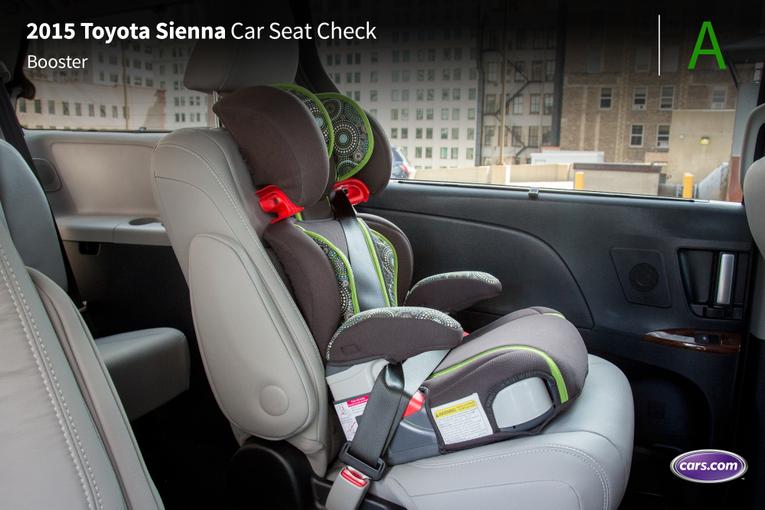
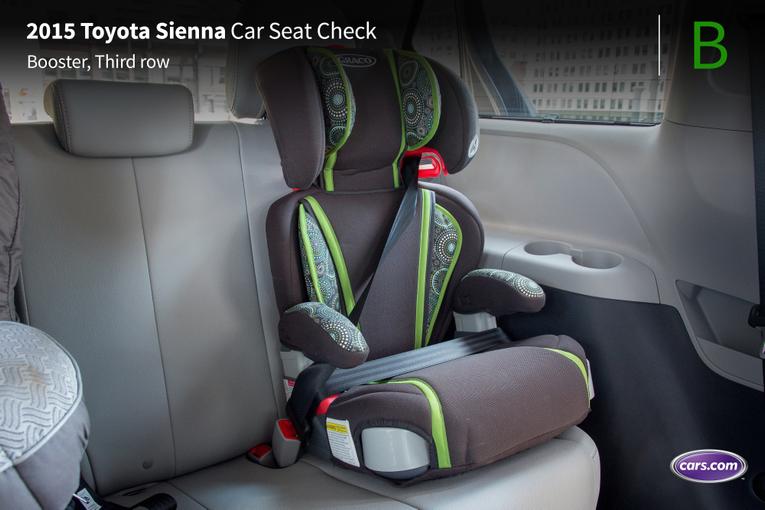
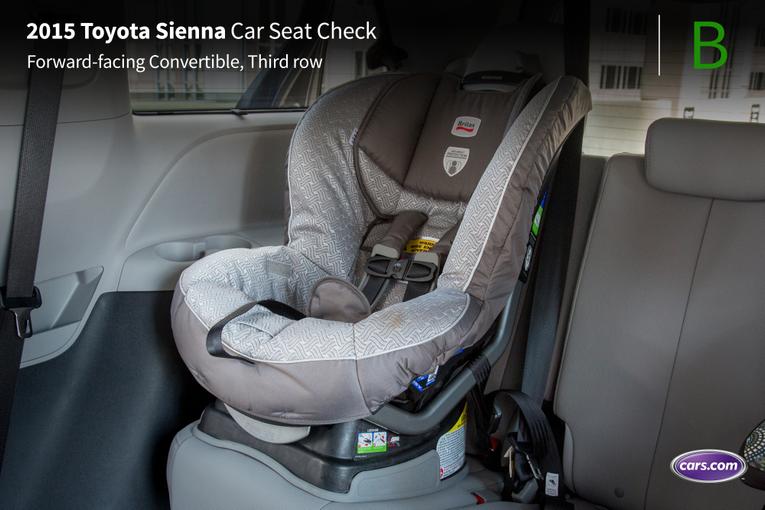
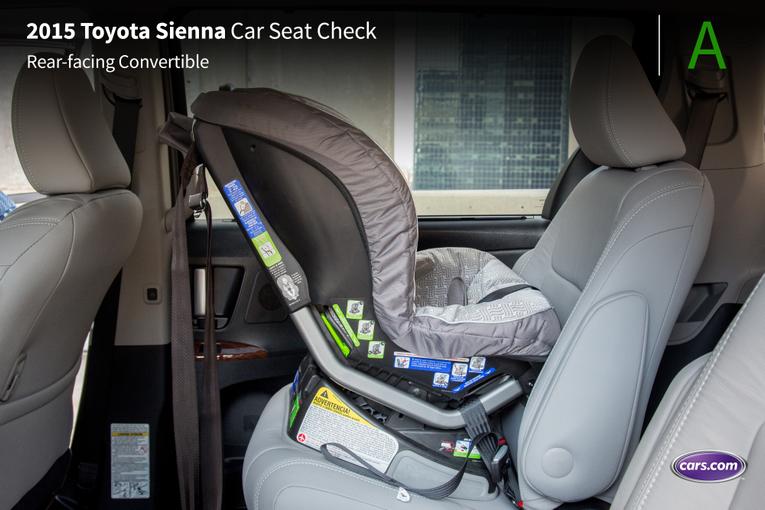

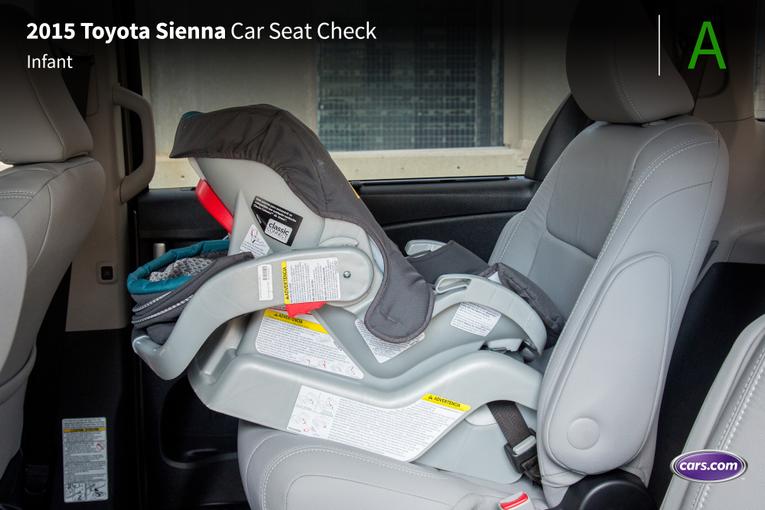
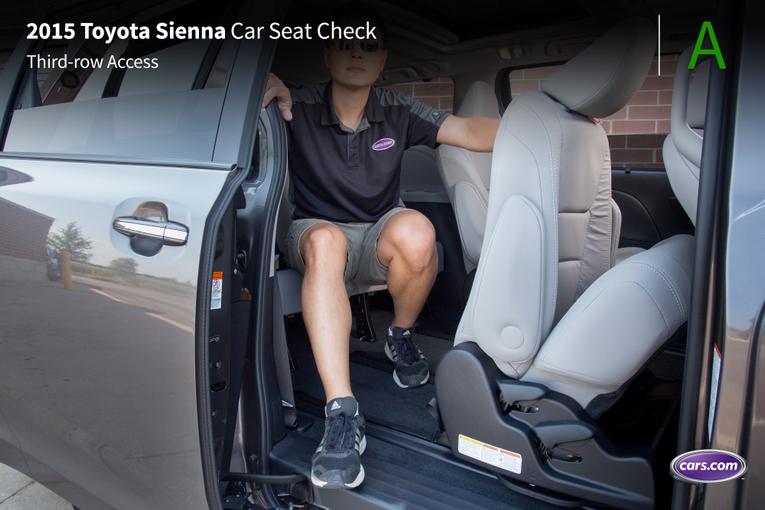
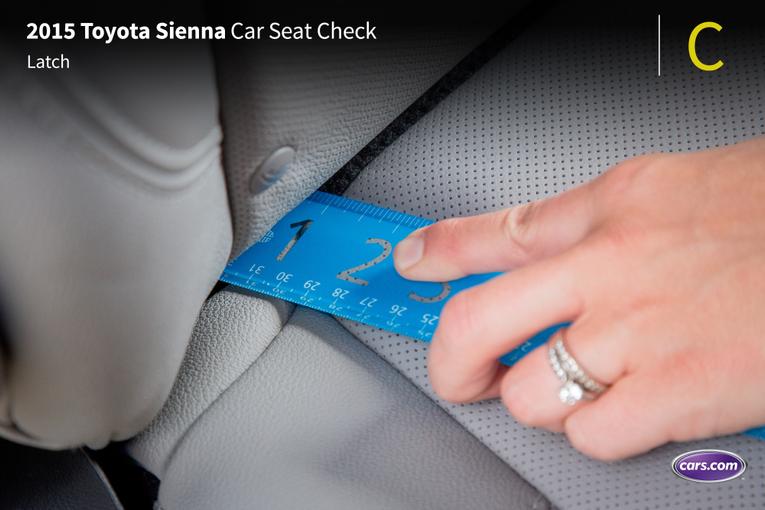
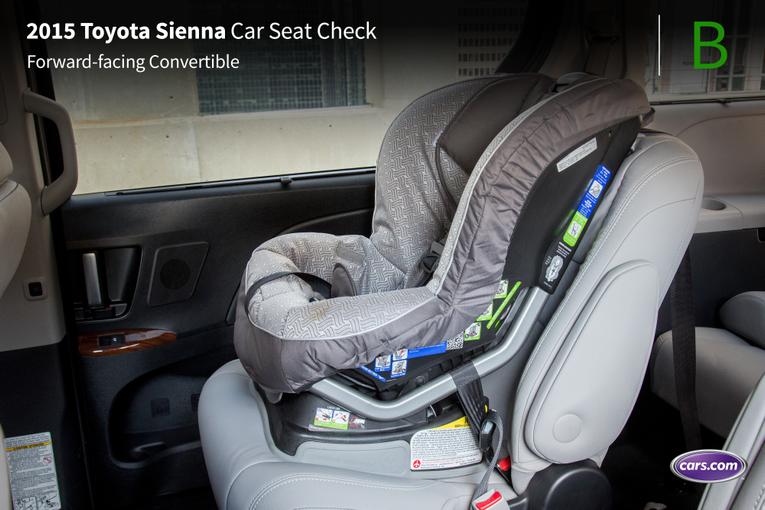
Grading Scale
A: Plenty of room for the car seat and the child; doesn't impact driver or front-passenger legroom. Easy to find and connect to Latch and tether anchors. No fit issues involving head restraint or seat contouring. Easy access to the third row.
B: Plenty of room. One fit or connection issue. Some problems accessing third row when available.
C: Marginal room. Two fit or connection issues. Difficult to access third row when available.
D: Insufficient room. Two or more fit or connection issues.
F: Does not fit or is unsafe.
About Cars.com's Car Seat Checks
Editors Jennifer Geiger and Jennifer Newman are certified child-safety seat installation technicians
For the Car Seat Check, we use a Graco SnugRide Classic Connect 30 infant-safety seat, a Britax Marathon convertible seat and Graco TurboBooster seat. The front seats are adjusted for a 6-foot driver and a 5-foot-8 passenger. The three child seats are installed in the second row. The booster seat sits behind the driver's seat, and the infant and convertible seats are installed behind the front passenger seat.
We also install the forward-facing convertible in the second row's middle seat with the booster and infant seat in the outboard seats to see if three car seats will fit; a child sitting in the booster seat must be able to reach the seat belt buckle. If there's a third row, we install the booster seat and a forward-facing convertible. To learn more about how we conduct our Car Seat Checks, go here.
Parents should also remember that they can use the Latch system or a seat belt to install a car seat, and that Latch anchors have a weight limit of 65 pounds, including the weight of the child and the weight of the seat itself.
Oh! Am I first to comment? nice blog to read regarding Car Seats
ReplyDelete